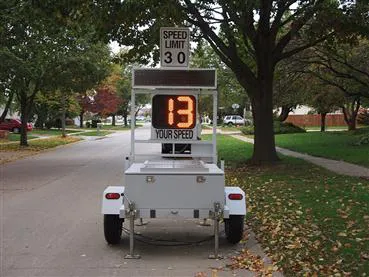Introduction
This chapter introduces the idea of augmented reality (AR) and defines what is meant by the term augmented reality in the context of this book. It also distinguishes augmented reality from other related media and technologies, as well as introduces some terms that will aid in understanding the chapters that follow.
Throughout the entirety of this book, I consider augmented reality to be a medium, as opposed to a technology. By medium, I mean that it mediates ideas between humans and computers, humans and humans, and computers and humans. Of course, implementing augmented reality as a medium requires technology and a clear understanding of that technology. Numerous technologies can be used to implement augmented reality, and this book addresses a variety of different methods and types of technology that can be used. These technologies and the ideas behind them are covered in later chapters in the book. There are advantages and disadvantages with different technologies for different types of applications. The chapters that follow address the characteristics of the technologies and show the advantages and disadvantages of using them in different types of applications. By taking the stance that augmented reality is a medium, it will become much clearer how the technologies involved can be used to create compelling applications for a variety of purposes instead of as a mere technological novelty. In much the same manner as a book about making movies needs to treat not only the technologies involved, such as cameras, lights, and projectors, but also how to use the medium to tell a story, to evoke emotion, or to document an event, it is important to consider more than just technology to create compelling augmented reality applications.
Humans interact with different media in different ways. Typically, people read a book. They watch a movie. They listen to music. This book considers that the way people engage with augmented reality is to experience it. Augmented reality can appeal to many of our senses (although currently it is primarily a visual medium). Augmented reality is interactive, so it doesn’t make sense to watch it or listen to it. We must engage with it in order to gain the experience that it provides. Augmented reality can support many different application areas. It can be applied in education, entertainment, medicine, and many more areas discussed in this book. Each of these different application areas and specific applications constitute an experience.
So what is this augmented reality experience? In brief, the core essence of an augmented reality experience is that you, the participant, engage in an activity in the same physical world that you engage with whether augmented reality is involved or not, but augmented reality adds digital information to the world that you can interact with in the same manner that you interact with the physical world. I’ll define augmented reality more precisely later in this chapter, but for now, consider it that you are engaged in the regular normal world, but there are additions to that world that consist of digital information that is placed in the world to augment the world with things you would not normally see, hear, feel, touch, etc. What’s an example of an augmented reality experience? Imagine for a moment that you go to visit a vacant lot where you intend to build your dream home. Now let’s consider an augmented reality experience in which you go to that (vacant) lot, but through the use of technology you are able to see your dream home in place on that lot. You can walk around the house and see it from all different viewpoints just like you could if the house was actually completed on the lot. You can interact with the house, open the door, and so on just like you could in the real world. However, AR can also offer the potential to do things that are not possible in a normal interaction in the real world. Perhaps you want to see the house in a different color, move the house on the lot, or see the house take off like a rocket ship. These are all possible with augmented reality.
Let’s start by looking to the past to see where some of the ideas behind augmented reality came from. Then, we will be able to define augmented reality more precisely and explore how it works and what it is good for.
Where Did Augmented Reality Come from?
Since the beginning of time, humankind has sought to alter and improve their environment. Early attempts to modify and enhance their world involved manipulating physical objects in the physical world. For example, early humans cut clearings in jungles, gathered rocks to sit on, and sharpened branches into spears. Later, they learned to represent information symbolically and learned to create imagery, such as paintings on cave walls for functional purposes—to indicate a map to a favorite location, to tell a story, or purely as an aesthetic adornment (Figure 1.1).
Figure 1.1 In ancient times, people adorned their dwellings with drawings regarding their life experiences. Note that these drawings remain today, long after they were created. Photo courtesy of Kevin Connors.
As humankind progressed, they began to discover and make tools to aid them in altering their environment. However, most changes they made were rather permanent and required a lot of effort to make and alter. At this point, the world was purely in the physical realm (Figure 1.2).
Figure 1.2 Ancient humans used primitive tools to manipulate their environment. Here, the results of altering and augmenting the natural environment are shown. This is the sphinx and the pyramid of Khafre at Giza. The sphinx was carved from a single piece of limestone. Photo courtesy of the Central Intelligence Agency.
As humankind and technology progressed, ideas became much more important, and those ideas were represented symbolically, whether realistically (such as a literal drawing) or symbolically (such as a map). At this point, the world consisted of physical entities, but also ideas and representation of those ideas in physical media. Ideas were expressed as paintings, sculpture, music, dance, and more. Mapping technology improved, and the field of semiotics matured (Figure 1.3).
Figure 1.3 Even children desire to alter their physical world—even if it is just for fun. Photo courtesy of Alan B. Craig.
It wasn’t until the 20th century that it became feasible to create, store, and retrieve information rapidly. The “industrial age” saw rapid improvements in the ability to construct, deconstruct, and modify physical structures with relative ease. However, the rate at which they could be constructed and dismantled still remained rather long, measured in years, in months, or, at the best, in days. Adornments to the physical world remained in the physical realm, that is, any modification to the environment was manifested with other physical entities that had weight and occupied space. Thus, if it was desired to make a piece of information available in a specific physical space, the only real way to do it was to create a physical artifact that either was or contained a representation of that piece of information. For example, if it was desired to indicate the maximum rate of speed at a certain place on a specific road, a physical sign would be erected that was constructed to convey the desired information (Figure 1.4).
Figure 1.4 A speed limit sign conveys specific information for a specific place. Photo courtesy of Alan B. Craig.
If it was desired to change the information regarding that place, it was necessary to construct a new sign, or at least to repaint the sign. Advances in technology made it possible to construct more generic signs with information that could be changed at will. Thus, if there was a need to change the speed limit, whether permanently or temporarily, the sign could be updated with the flick of a few switches (Figure 1.5).
Figure 1.5 A speed limit sign conveys specific information for a specific place. The speed limit shown on this sign can be changed at will by an appropriate official. The sign does not need to be repainted to indicate the new speed limit. Photo courtesy of U.S. Department of Transportation.
Additional technology allows the addition of still more information based on what is happening at that place and time. This additional technology allows the physical sign to indicate the maximum speed allowed at that place and time, but also indicates a driver’s current rate of speed (Figure 1.6).
Figure 1.6 A sign can also convey information about what is happening at that place in real time. In this case, a sign indicates the speed of a car at that point in time and space. Photo courtesy of Alan B. Craig.
Finally, a modern sign can not only convey the speed limit and your current rate of speed, but it can also determine whether or not you are abid...






